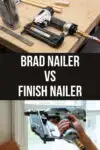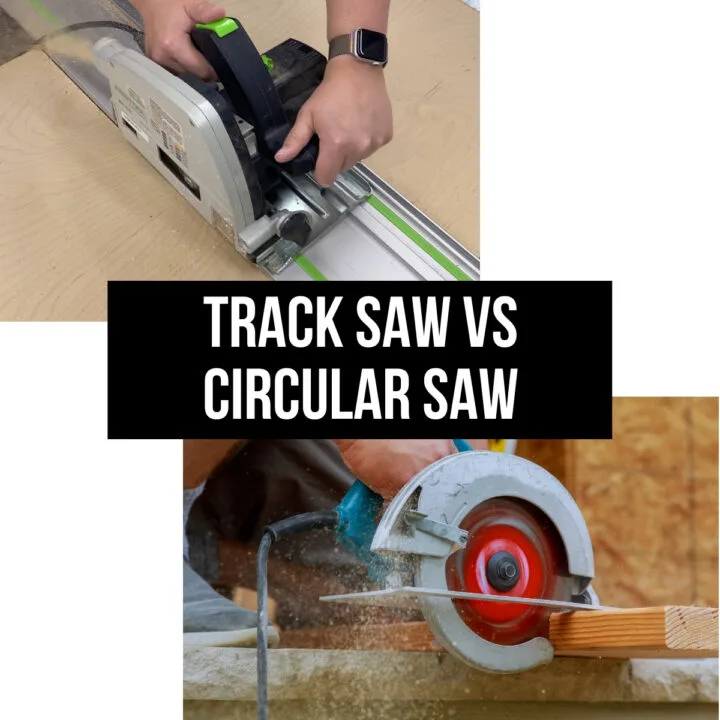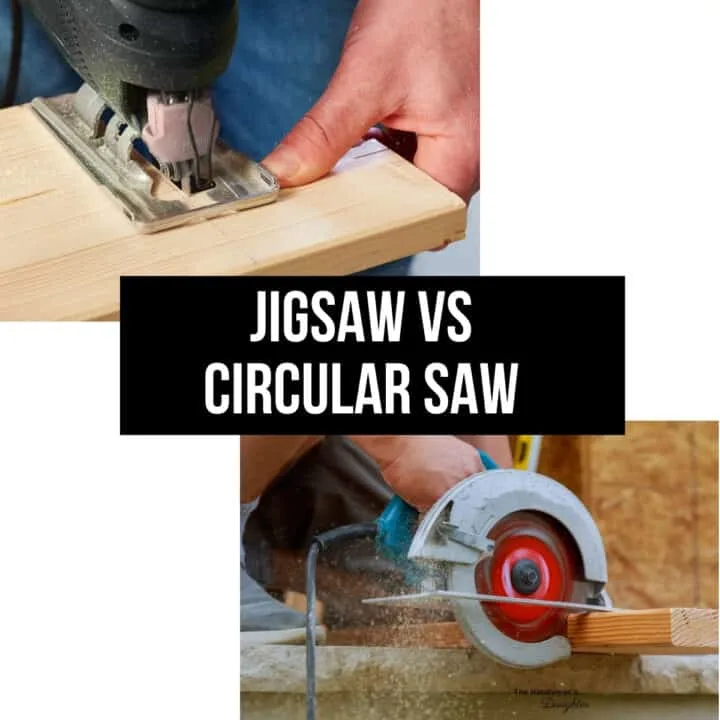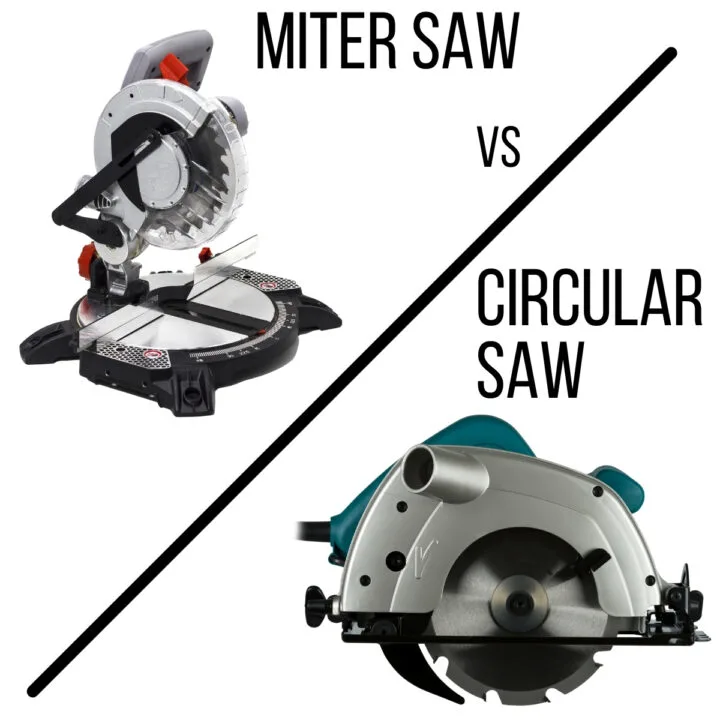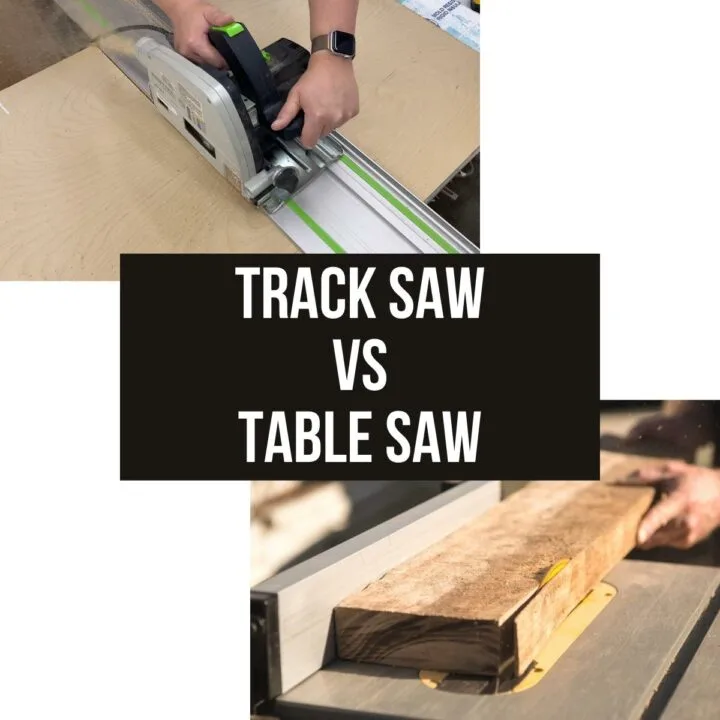Wondering about the difference between a brad nailer vs finish nailer? Find out which one is right for you in this article!
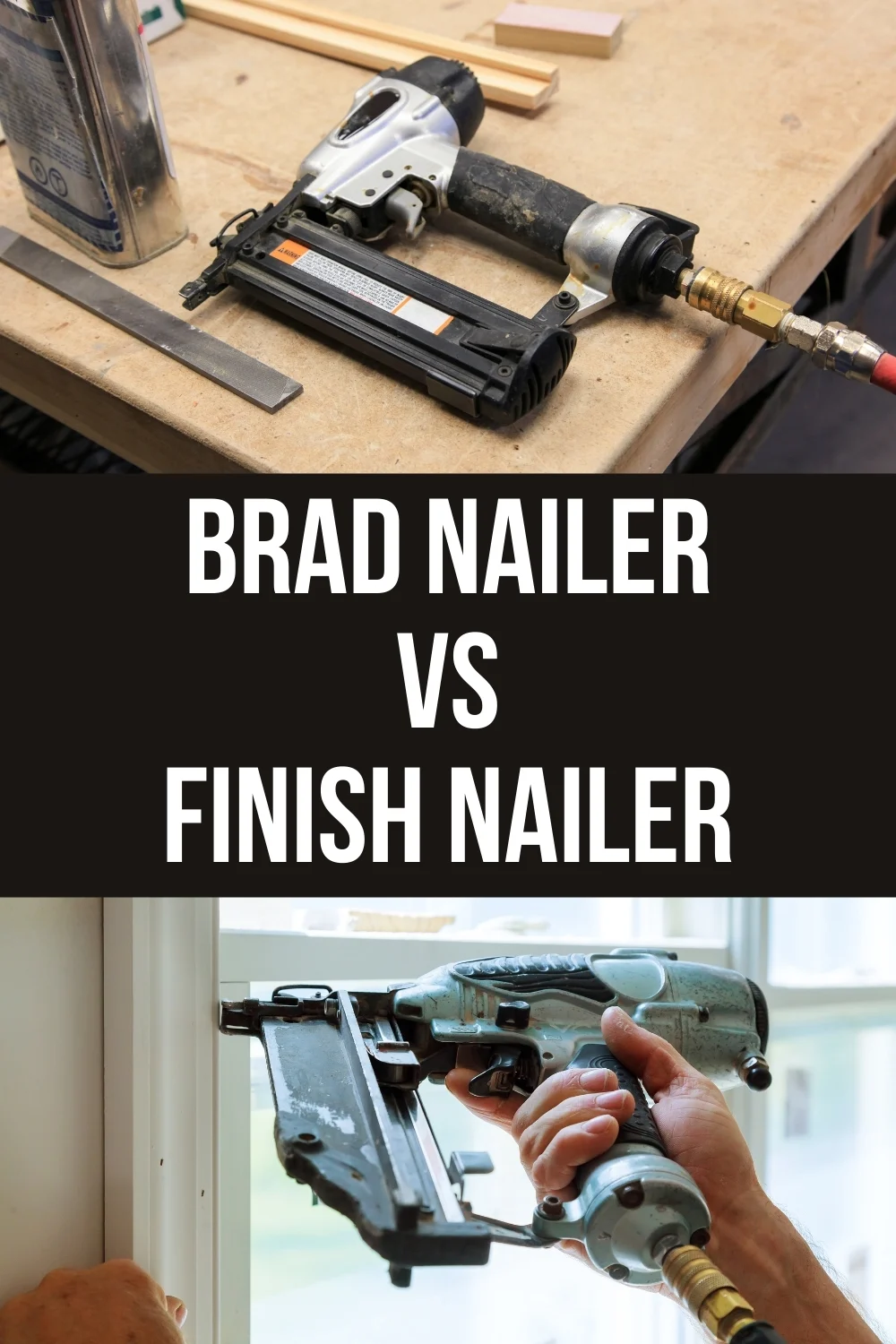
There are a lot of different nailers out there and it's hard to figure out which one is right for you.
Brad nailers and finish nailers both have their place, but they're not the same thing at all! If you want to get a professional result in your projects, you need to learn which one to use when.
This guide breaks down the difference between brad nailer vs finish nailer so that you can make an informed choice on which tool is best for your next project.
Let's jump in!
This post contains affiliate links for your convenience. Purchases made through these links may earn me a small commission at no additional cost to you. Please visit my disclosures page for more information.
What's the Difference Between a Brad Nailer vs Finish Nailer?
The main difference between these two different nail guns is the size of the nail they shoot. The lower the gauge number, the thicker the nail. The brad nailer fires 18 gauge nails, and the finish nailer fires 16 gauge nails.
Brad nailers are used for light-duty work, such as holding pieces together while the glue dries. It's also useful for attaching thin trim where the tiny nail holes won't be very noticeable, like the trim around this screen door.
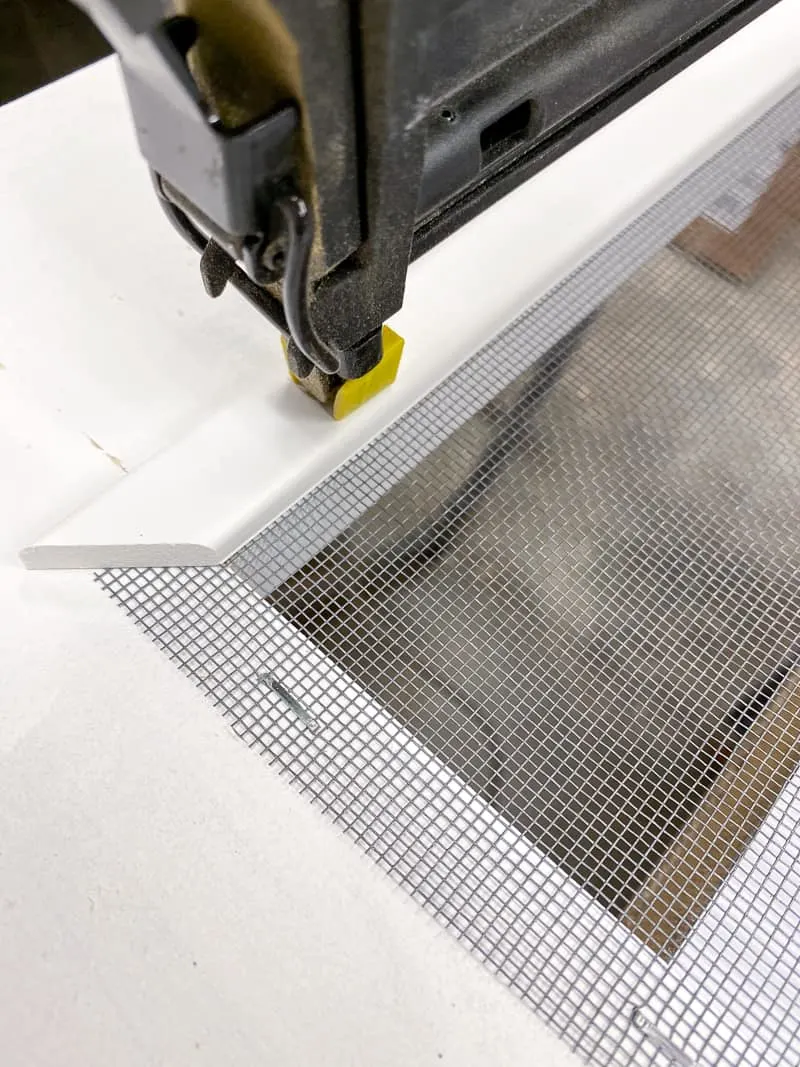
Finish nailers fire slightly larger nails with a wider head to provide more holding power. This type of nailer is more commonly used for attaching baseboards and door trim. These holes are more obvious and typically need to be hidden with wood filler or putty before painting.
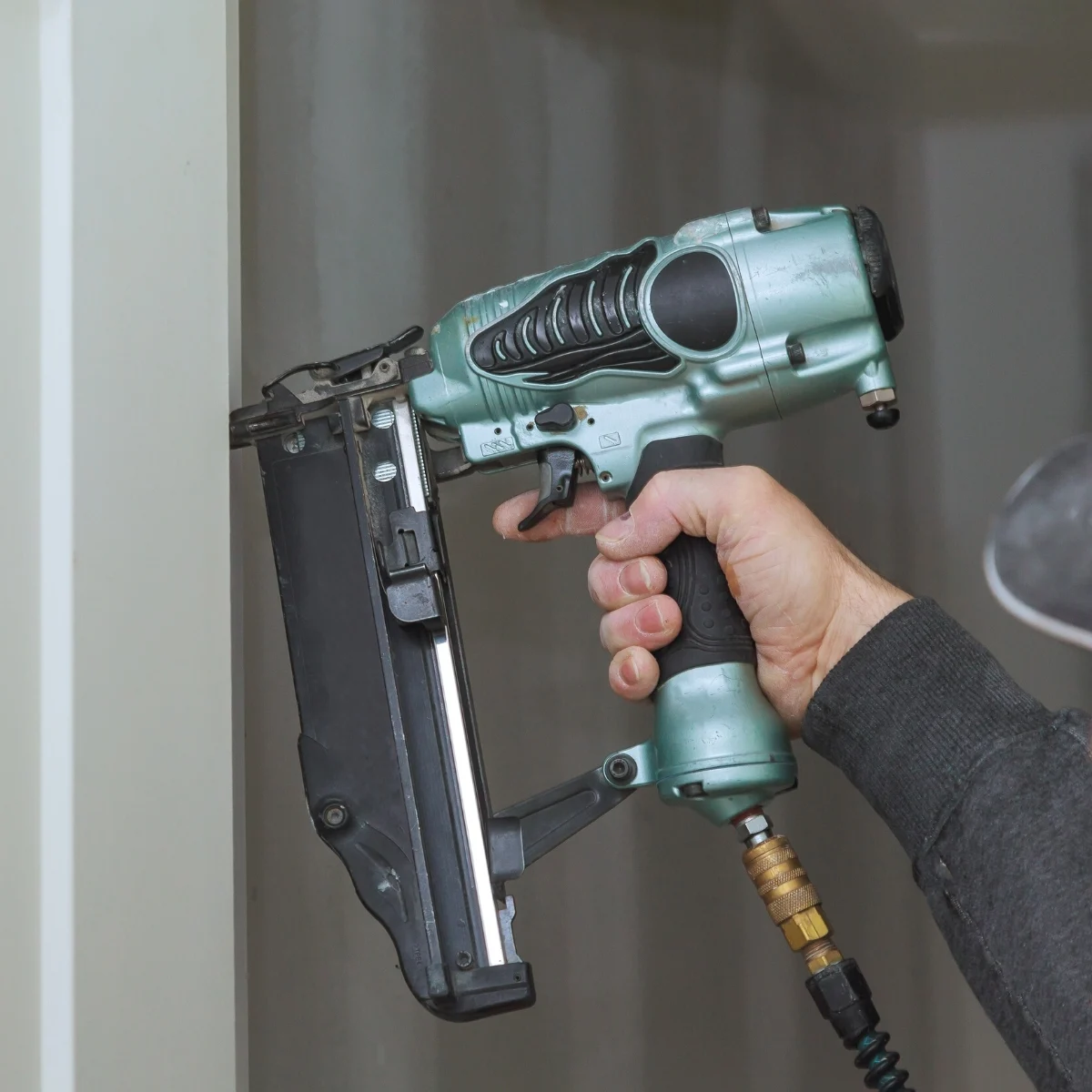
Want an even smaller nail hole? Check out my side by side comparison of brad nailers vs pin nailers!
Alright, now that you have a general understanding of the differences between these tools, let's spend some time looking at each of them.
What is a Brad Nailer?
A brad nailer is a pneumatic, gas, or battery-powered nail gun. Brad nails are more like thick wires rather than actual nails, and you can bend them easily with your fingers. You couldn't use a hammer to drive in these tiny nails, but a brad nailer does the job without cracking the wood or leaving a huge dent!
The brad nailer is a useful, versatile tool that can be used for lots of different jobs - this is one reason I included it in my list of best tools for DIY projects.
Note: Both the brad and finish nailer share many of the same features. The major difference is the size of the nail they fire.
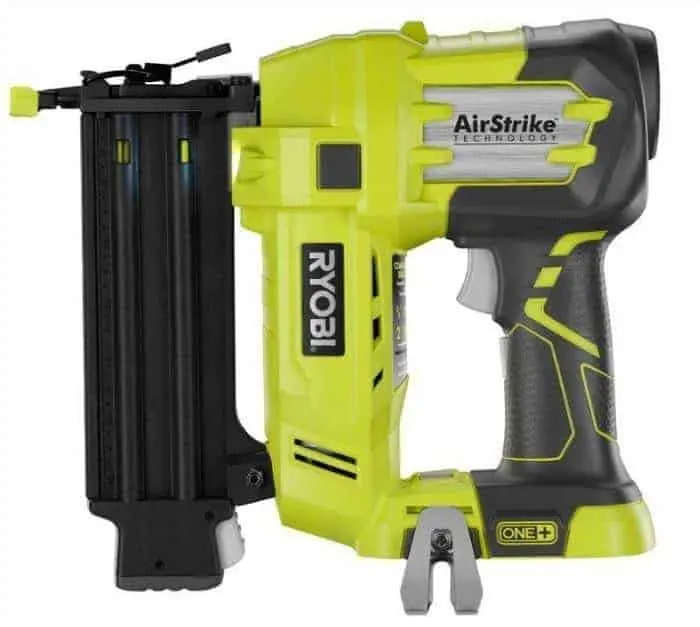
Before you pick up a brad nailer, here are a few parts you should know:
- Trigger - The trigger on a brad nailer often operates with a safety. Some brad nailers allow you to use bump mode - hold down the trigger as you "bump" the wood with the tip to drive a bunch of nails in a row.
- Depth control - Many modern brad nailers have a dial that allows you to adjust the firing depth of the nail. You don't want your brad nails blowing right through the project, or sitting proud above the surface!
- Magazine - This is where you load the nails. Often, the magazine will have an area that indicates when you're almost out of nails.
- Tip or nose - The tip or nose of the nail gun is where the nail comes out. Modern nail guns often have a safety on the end. The nail gun will only fire when the nose of the brad nailer is depressed.
- Jam ports - Just above the nose of the brad nailer, there is usually an area with a spring-loaded latch. This is where you will clear jams from your nail gun.
When Should I Use a Brad Nailer?
Brad nailers are a great choice for projects that require mild holding power, particularly in woodworking projects. It's great for attaching thinner pieces of wood to a frame, like the slats on this umbrella stand side table. The slats are purely decorative, so they just need a few small nails to hold them in place.
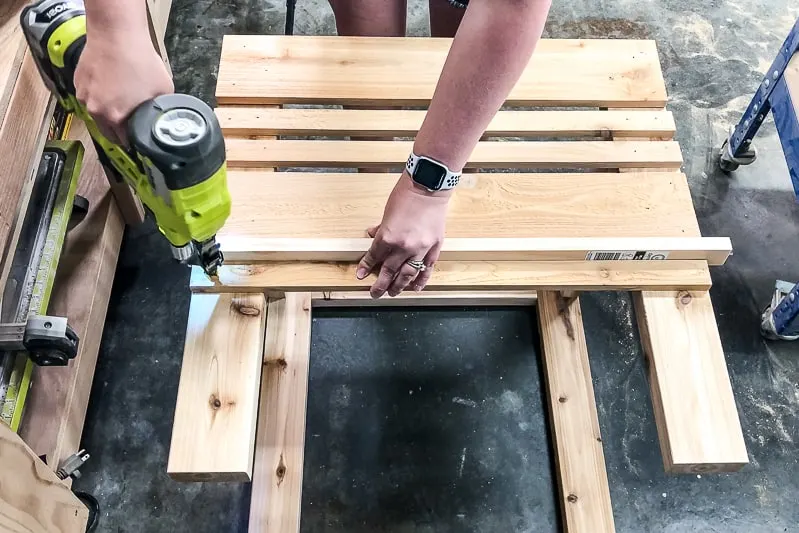
Often, a brad nail is combined with wood glue to create a stronger joint. The nail acts as a clamp to hold the two pieces together securely while the glue dries.
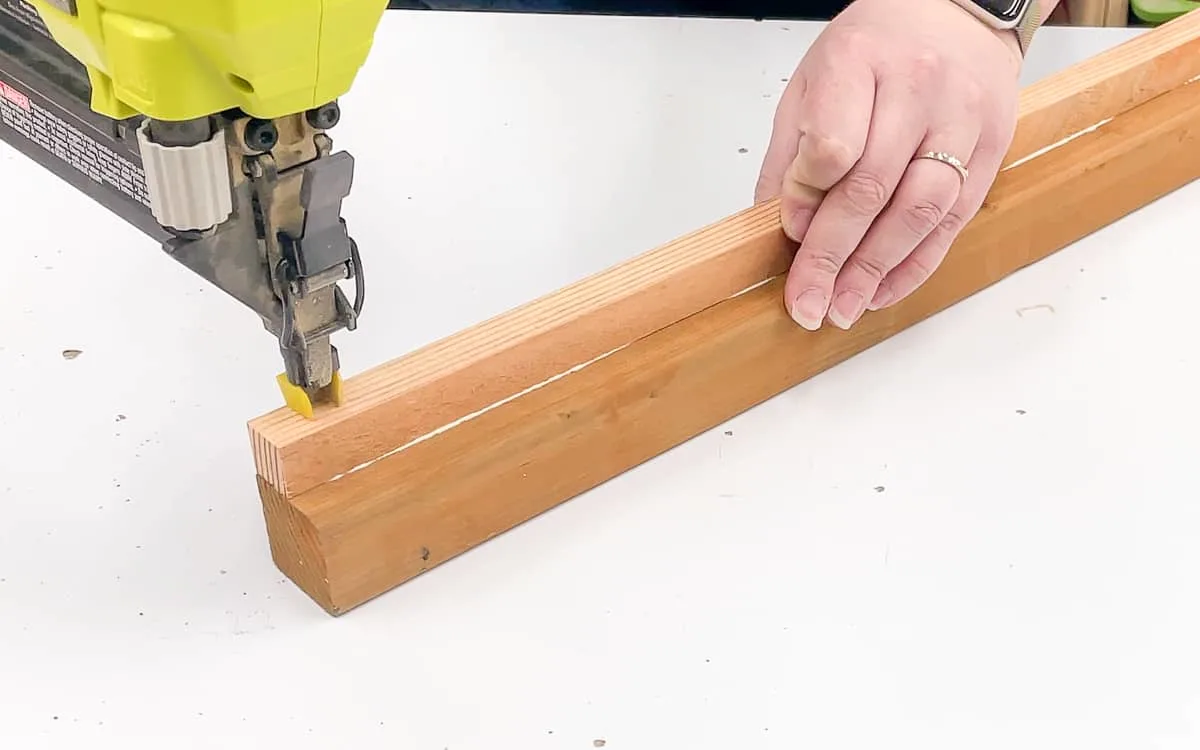
If you use brad nails alone, they can easily bend or work their way loose. A few of my railing planter boxes started to fall apart as the wood expanded and contracted with moisture, so I had to reinforce the joints with corner brackets.
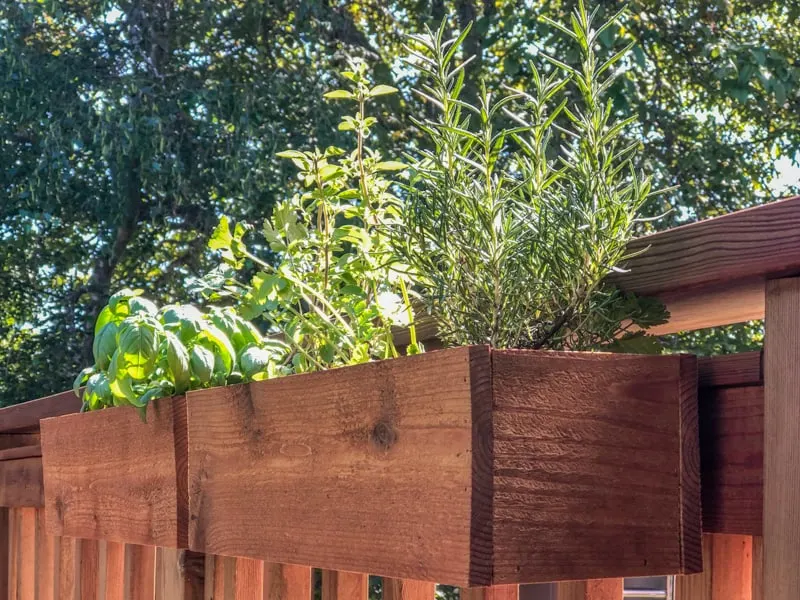
What is a Finish Nailer?
A finish nailer looks very similar to a brad nailer; however, a finish nailer uses thicker nails with larger heads. Since the finish nailer uses a larger nail, it can handle more robust tasks with more holding power than a brad nailer.
When Should I Use a Finish Nailer?
Finish nailers open up some possibilities when it comes to projects. The thicker nails can drive through hardwoods and thicker materials more easily, and provide more holding power. It's more commonly used for home improvement projects rather than woodworking.
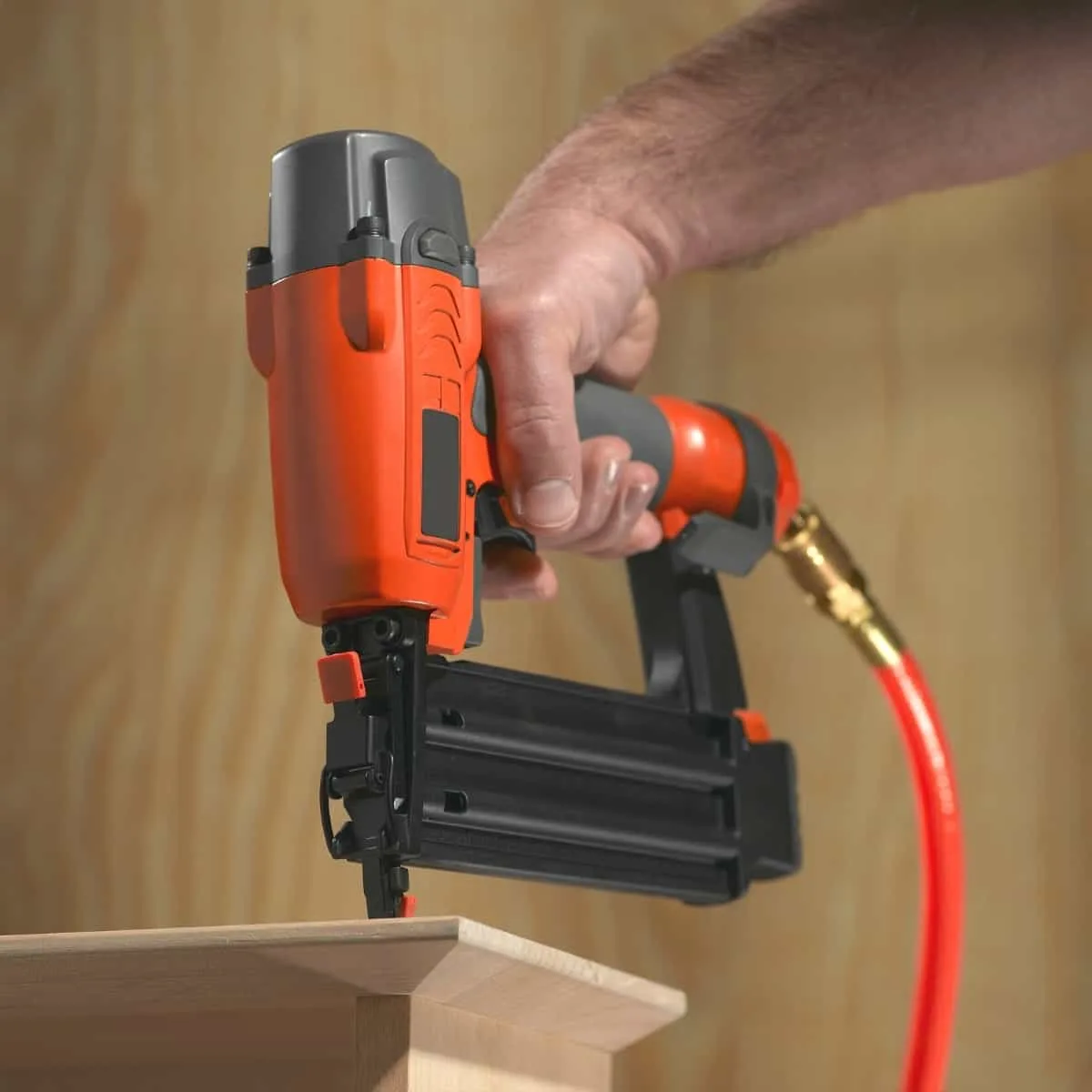
There is some overlap between the finish nailer and brad nailer. Though the finish nailer has some holding power, don't count on finish nails for major structural support. If you've got a heavy-duty project, like framing a house, use a framing nailer instead.
How to Use a Brad Nailer or Finish Nailer
If you don't know what you're doing, a lot can go wrong with a nail gun! In this section, we discuss some safety guidelines to follow. Both types of nailers operate the same way.
- Protection - Be sure to wear safety glasses and hearing protection. Also, beware of your hands - stay out of the path of the nail!
- Choose the right nail length - A nail that's too long has a greater chance of misfiring; a nail that's too short won't properly hold. Generally, you want the length of your nail to be twice the thickness of the material you're nailing.
- Set the right depth - Even with the right sized nail, if your nail gun's depth is incorrect, you won't effectively secure your material.
- Hold the nailer at the proper angle - Both types of nails usually have a v-shaped point. Sometimes, the nails will curve to the left or right after being fired. Hold your nailer perpendicular to the edge of the board so that if the nail curves, it curves into the material, not out the side (and into your hand!)
- Practice - Before you use your nailer on a serious project, take some time to practice! Too many times, people expect to understand a tool without any practice.
- Fire the nail - After you've practiced and properly set your nailer, hold it steady and pull the trigger. Go slow at first and inspect each nail after it's fired, adjusting the depth if necessary. Once you get the hang of it, things will speed up!
- Keep your magazine full - Once you get into a rhythm, you might forget to keep the magazine full. Many nail guns have an indicator on the magazine that will show you when you're low on nails.
For a more detailed look at how to use a nail gun, check out the video below!
Frequently Asked Questions
Can I Use Brad Nails in a Finish Nailer?
No, you cannot use brad nails in a finish nailer. Be sure to follow the recommended sizes for your nail gun. Using the wrong sized nail can result in damage to your tool.
Can You Use a Brad Nailer for Baseboards?
Depending on the thickness of your trim, you may be able to get away with using 2 inch long 16 gauge brad nails for baseboards. However, if you need increased holding power, use a finish nailer.
Pneumatic or Battery Powered?
If you already have a compressor, pneumatic brad or finish nailers will be cheaper and lighter. But battery powered nailers are way more convenient, since you don't have to haul the compressor around the house! I only use battery powered nailers for this reason, and I love using them!
Which is Better - a 15 or 16 Gauge Finish Nailer?
A 15 gauge finish nailer will have slightly better holding power than a 16 gauge finish nailer without causing much difference in footprint. However, this will come down to personal preference.
How Do I Sink a Nail Head That's Sticking Out?
If your nailer misfires, or if the nail hit a particularly dense section of wood and didn't go through all the way, you might end up with the nail head sticking up from the surface. No problem! Position a nail punch over the head of the nail, then tap it lightly with a hammer. This spring-loaded version doesn't even require a hammer, so you can get into those tight spots easily!
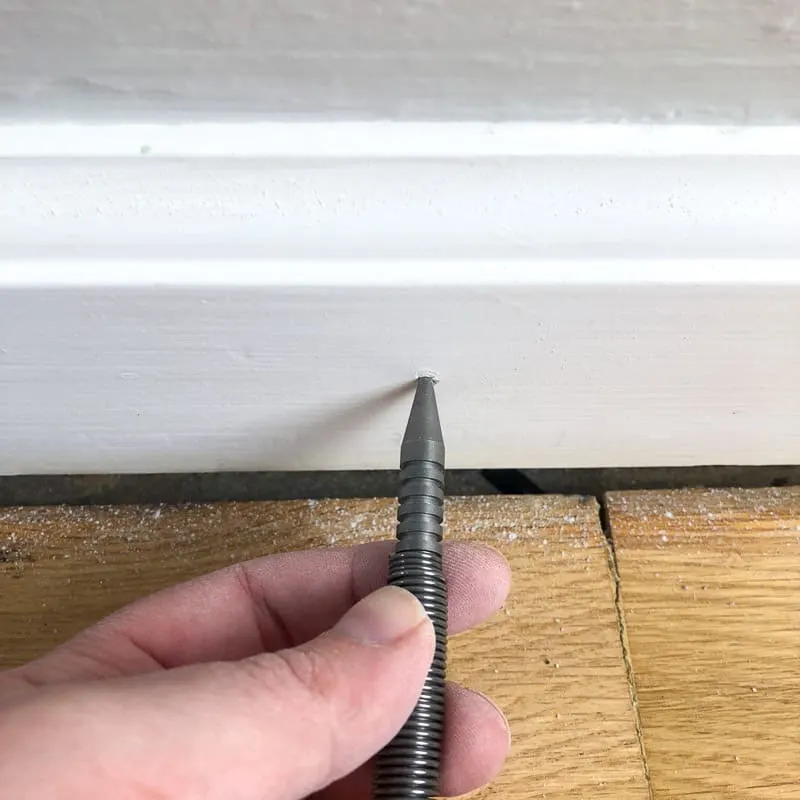
The Ryobi cordless 16 gauge brad nailer was one of my first tool purchases, and I still use it frequently years later! I plan to purchase a finish nailer once I start replacing all the baseboards and window trim in my home, but I've found that the smaller tool is more useful for woodworking projects.
Hopefully this article helped you make an informed choice about which tool to use for your next project! If you have any questions, please feel free to ask in the comments section below!

